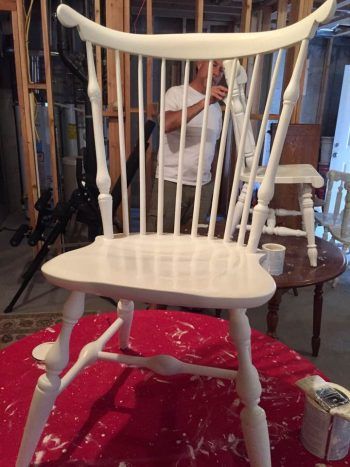Painting Techniques for Revitalizing Furniture

Furniture is an integral part of our homes, adding functionality and style to our living spaces. Over time, however, our beloved furniture may start to lose its charm and show signs of wear and tear. Instead of investing in expensive replacements, why not consider revitalizing your furniture with a fresh coat of paint? In this article, we will explore various painting techniques that can bring your furniture back to life.
1. Surface Preparation
Before you start painting, it’s crucial to prepare the surface of your furniture properly. This ensures that the paint adheres well and provides a smooth and long-lasting finish. Start by cleaning the furniture thoroughly, removing any dirt, dust, or grime. If there are existing layers of paint, consider stripping them off using a paint stripper or sandpaper. Once your furniture is clean and smooth, apply a primer to create a suitable base for the paint to grip onto.
2. Chalk Paint
Chalk paint has gained popularity in recent years due to its easy application and shabby chic finish. With chalk paint, you can achieve a distressed and aged look that adds character to your furniture. This type of paint requires minimal prep work, making it a preferred choice for beginners. Additionally, chalk paint adheres well to various surfaces, including wood, metal, and even plastic.
When using chalk paint, remember to apply it in thin layers, allowing each coat to dry before adding another. This technique helps prevent clumping and ensures an even finish. To enhance the distressed look, lightly sand specific areas of the furniture after the final coat of paint has dried. Finally, seal the painted surface with wax or a clear varnish to protect the finish and increase longevity.
3. Two-Tone and Ombré Effects
If you’re looking to add an interesting visual element to your furniture, consider using the two-tone or ombré technique. With the two-tone effect, you can paint different parts of the furniture in contrasting colors, creating a bold and eye-catching statement. This technique works particularly well on pieces with interesting architectural details or those that have separate drawers or compartments.
The ombré effect, on the other hand, involves blending different shades of the same color from light to dark, creating a gradient effect. This technique works exceptionally well on dressers, cabinets, or sideboards. To achieve the ombré effect, start by applying the lightest shade of paint to the top portion of the furniture and gradually darken the color as you move downwards. Blend the colors well to achieve a seamless transition.
4. Stenciling
If you want to add intricate patterns or designs to your furniture, stencil painting is a fantastic technique. Stencils come in a wide variety of shapes and sizes, allowing you to personalize your furniture according to your taste. This technique works well on tabletops, cabinet doors, or any other flat surface.
To stencil your furniture, secure the stencil in place using painter’s tape and apply the paint evenly over the stencil using a sponge or stencil brush. Carefully remove the stencil once the paint is dry, being cautious not to smudge the design. This technique allows you to create unique patterns and motifs that can transform your furniture into a work of art.
5. Distressing
The distressed look adds a touch of vintage charm to your furniture, making it appear weathered and aged. Distressing involves intentionally wearing away certain areas of the paint to expose the underlying layers or the natural wood grain. This technique works well on wooden furniture and is particularly suitable for rustic or farmhouse-style pieces.
To distress your furniture, start by applying a base coat of paint in the desired color. Once the paint has dried, use sandpaper or steel wool to gently rub the areas where natural wear would occur, such as corners, edges, or raised details. As you sand, the lower layers of paint or wood will start to show, giving your furniture an antiqued look. Remember to seal the distressed areas with wax or a clear varnish to protect the finish.
Conclusion
Revitalizing your furniture through painting techniques is a cost-effective and creative way to give your living space a fresh new look. Whether you prefer the distressed charm of chalk paint or the elegance of stenciling, there are numerous techniques to explore. Remember to prepare the surface properly, choose the right type of paint, and protect your finished results with appropriate sealants. With a little bit of time and effort, your old furniture can be transformed into unique pieces that breathe new life into your home.


